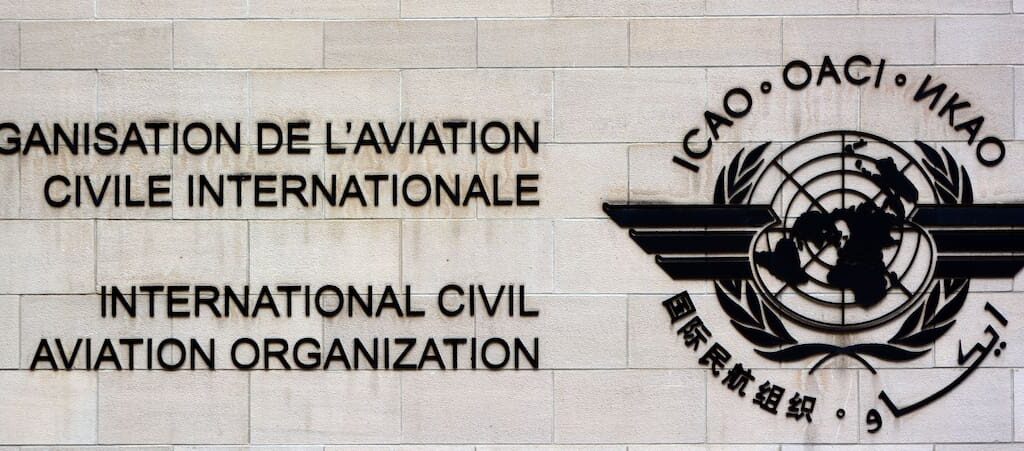
What Is ICAO? Definition, Functions, and Its Importance in Aviation
News
The International Civil Aviation Organization (ICAO) is a specialized agency of the United Nations responsible for establishing standards and regulations to ensure the safety, efficiency, and regularity of global air transport. In simple terms, ICAO defines the guidelines that govern civil aviation worldwide, coordinating with member states to maintain uniform standards and facilitate international cooperation. If you wish to delve deeper into the topic, you can visit the ICAO official website.
In this article, we will answer the question “What is ICAO?” in a clear and instructive manner, exploring its objectives, functions, history, structure, and the use of the ICAO code. We will also include examples related to the aviation sector, impactful cases in the industry, and comparisons with other organizations such as IATA. Read on to discover why ICAO is key to global aviation!
Índice
What Is ICAO and What Is It For?
Definition of ICAO
ICAO, which stands for the International Civil Aviation Organization, is a United Nations agency created to promote the safe and orderly development of international civil aviation. Its mission is to establish standards and recommendations that facilitate air navigation, ensure safety, and protect the environment—among other essential aspects for the global functioning of aviation.
Main Objectives and Functions
ICAO has several objectives and functions covering various aspects of air transport. Among the most notable are:
- Development of International Standards:
ICAO develops and updates standards and recommended practices (SARPs) that regulate safety, navigation, environmental protection, and the efficiency of air transport. - International Cooperation:
It facilitates coordination and cooperation among countries for the adoption of common aviation policies and procedures. - Air Safety:
ICAO works on the continuous improvement of aviation safety by analyzing incidents and proposing preventive measures. - Environmental Protection:
The organization develops guidelines and strategies to reduce the environmental impact of air activities, promoting sustainable practices. - Training and Technical Assistance:
It offers training and assistance to its member states to implement and comply with international standards.
These objectives translate into specific functions such as supervising air navigation, certifying aircraft, and investigating aviation accidents. ICAO is also responsible for coordinating global air traffic, ensuring that routes and procedures are safe and efficient.
Why Is ICAO Key to Global Aviation?
ICAO’s importance in the aviation industry lies in its ability to unify criteria and establish international standards that facilitate interoperability between countries and airlines. Some key reasons include:
- Uniformity in Standards and Procedures:
Thanks to ICAO, member states use a common set of rules, reducing technical barriers and easing communication among air traffic controllers, pilots, and authorities. - Safety and Efficiency:
ICAO’s recommendations have contributed to a remarkable improvement in global air safety. International coordination allows for the rapid implementation of measures during emergencies or incidents. - Promotion of International Cooperation:
The organization acts as a forum for dialogue and collaboration among nations, which is essential in such a globalized sector as aviation. - Impact on Regulation and Trade:
ICAO’s standards facilitate commercial exchange and passenger transport, directly influencing the global economy.
For more information on the importance of air safety, you can consult reports from IATA.
History and Evolution of ICAO
Who Created ICAO?
ICAO was founded on April 7, 1944, as a result of the need to establish an international body to regulate the growing civil aviation industry. Its founding took place during the Chicago Conference—a historic milestone that brought together representatives from 52 countries to lay the foundations for modern aviation.
What Was ICAO’s Former Name?
Before adopting its current name, the organization was known as the International Civil Aviation Organization. Although the acronym and name have remained consistent, the entity has evolved in its functions and scope over the decades, adapting to technological changes and new demands in air transport.
Key Historical Milestones
- 1944 – Chicago Conference:
The signing of the Chicago Convention laid the groundwork for the creation of ICAO. This event marked the beginning of international cooperation in aviation. - 1950 – Expansion of Membership:
In the following years, the organization was joined by more countries, expanding its influence and improving global coordination in aviation. - 1960s and 1970s – Modernization and New Regulations:
With the increase in air traffic, ICAO pushed for the modernization of standards and procedures, adapting to technological innovations and the evolving needs of the industry. - 2000 Onwards – Focus on Sustainability:
In recent times, ICAO has intensified its efforts on environmental protection, promoting initiatives and recommendations to reduce the carbon footprint of aviation.
These milestones reflect how ICAO has evolved from its inception to become an essential organization for the safety and efficiency of global air transport. For more on the history of aviation, you can read the Wikipedia article on the History of Aviation.
Organization and Structure of ICAO
Who Leads ICAO?
ICAO is led by a Secretary General, who is appointed by the organization’s Assembly and acts as the main representative and manager of daily activities. The Secretary General works together with a Council of 36 member states, elected by the Assembly. This council is responsible for decision-making and the implementation of internationally agreed policies and regulations.
Where Is ICAO’s Headquarters?
ICAO’s headquarters is located in Montreal, Canada. This central hub houses experts and officials from around the world who collaborate on the development and updating of international aviation standards.
Member and Non-Member States of ICAO
Currently, ICAO has 193 member states, making it an almost universal organization in terms of representation in the aviation industry. However, some territories or regions are not formally integrated into the organization. ICAO’s broad membership ensures that its standards and recommended practices are applied uniformly worldwide, facilitating interoperability and international cooperation.
Are ICAO’s Standards Mandatory?
The standards and recommended practices (SARPs) issued by ICAO are not automatically legally binding. However, member states commit to incorporating them into their national legislation and implementing them in their aviation operations. Adopting these regulations is crucial to ensure harmonization in the safety, efficiency, and sustainability of global air transport.
ICAO Code and Its Use in Aviation
What Does the ICAO Code Mean?
The ICAO code is a four-letter designation used to identify airports and other aeronautical facilities around the world. This code, assigned by ICAO, is essential for communication and flight planning. For example, the ICAO code for Madrid-Barajas International Airport is LEMD.
Differences Between the ICAO Code and the IATA Code
It is important to distinguish between the ICAO code and the IATA code, as both are used to identify airports but have notable differences:
- ICAO Code:
Consists of four letters and is primarily used by air traffic controllers, flight planners, and in technical documentation. - IATA Code:
Consists of three letters and is more commonly used in ticketing, passenger information, and airline marketing.
Comparative Example:
- Madrid-Barajas International Airport:
- ICAO Code: LEMD
- IATA Code: MAD
This differentiation allows each system to be used according to its context (operational vs. commercial). For more details, you can consult the Wikipedia entry on airport codes.
Examples of ICAO Codes
Here are some examples of ICAO codes for international airports:
- LEMD: Adolfo Suárez Madrid-Barajas Airport, Spain.
- KJFK: John F. Kennedy International Airport, New York, USA.
- EGLL: London-Heathrow Airport, United Kingdom.
- YSSY: Sydney Airport, Australia.
These codes are essential for flight planning, communication among air traffic controllers, and the coordination of operations worldwide.
How to Join ICAO and Its Impact on the Industry
How to Join ICAO?
Membership in ICAO is not open to individuals but to states and, in some cases, to national aviation organizations. For a country to become a member, it must accede to the Chicago Convention and commit to implementing ICAO’s standards and recommended practices. The accession process involves approval by the ICAO Assembly, which evaluates the country’s compliance with certain criteria and its commitment to international civil aviation.
What Is ICAO’s Current Objective?
ICAO’s central objective is to ensure that international civil aviation develops in a safe, orderly, and sustainable manner. This involves continuously updating standards and procedures, promoting innovative technologies, and collaborating closely with other international organizations. Currently, ICAO also focuses strongly on reducing the environmental impact of aviation by promoting the use of sustainable fuels and implementing eco-friendly practices.
Impact of ICAO on Air Safety
One of the most significant aspects of ICAO’s work is its impact on air safety. Thanks to the development and dissemination of international regulations, the rate of aviation accidents has decreased significantly in recent decades. Some key achievements in air safety include:
- Improved Training and Certification:
ICAO establishes training standards for pilots, air traffic controllers, and maintenance personnel, leading to greater professionalization in the sector. - Rigorous Technical Standards:
The regulations ensure that aircraft meet high safety standards and that airports maintain adequate infrastructure. - Coordinated Emergency Response:
The organization facilitates communication among member states during crises, enabling rapid and coordinated responses to incidents or accidents.
These advancements have been fundamental in making aviation one of the safest modes of transport in the world. For instance, international coordination during emergencies—where ICAO acts as a mediator—ensures the continuity of air services and the safety of passengers.
Conclusion
Summary of the Importance of ICAO
ICAO is much more than just a regulatory body; it is the pillar that supports international civil aviation. Its functions range from developing safety and efficiency standards to promoting sustainable practices and fostering cooperation among states. By standardizing procedures and facilitating communication between countries, ICAO has enabled aviation to evolve into a safe, efficient, and environmentally friendly model.
Key aspects include:
- Uniformity and Coordination:
Ensuring that all countries adopt similar standards, which facilitates international flight operations. - Enhanced Safety:
The implementation of rigorous regulations has significantly reduced incidents and aviation accidents. - Innovation and Sustainability:
ICAO promotes the adoption of new technologies and sustainable practices to minimize the environmental impact of aviation. - Global Impact:
With 193 member states, its decisions and recommendations have a truly global reach.
More Information About ITAérea Training
If you are interested in aviation and wish to delve into topics such as air safety, air traffic management, and the implementation of international regulations, we invite you to explore the training courses and resources offered by ITAérea. Their platform provides specialized, up-to-date training designed for aviation professionals and enthusiasts who want to stay abreast of the standards and practices that make a difference in the sector.
Additional Resources and Calls to Action
For those who wish to explore the topic further, we recommend the following resources and links:
- ICAO Official Website: Discover the regulations, reports, and programs promoted by ICAO.
- Wikipedia – History of Aviation: An ideal resource for understanding the evolution of air transport.
- Comparative studies between ICAO and IATA: Review specialized articles and studies to understand the differences and similarities between these two key organizations.
- IATA – International Air Transport Association: Consult additional information on commercial and operational standards in aviation.
- Articles on air safety: Explore reports and analyses from FlightGlobal and Aviation Week to learn about real cases and industry trends.
These resources will help you expand your knowledge of ICAO and its impact on aviation, keeping you informed about industry developments and changes.
Final Reflection
ICAO is the driving force behind the standardization and safety of international civil aviation. With its focus on cooperation, innovation, and environmental protection, the organization has not only transformed the way aviation operates but has also significantly contributed to making air transport one of the safest and most efficient modes of travel in the world.
The implementation of ICAO codes, the training of highly qualified personnel, and the continuous updating of regulations have helped reduce incidents and optimize operations at airports and on flight routes over the years. Global commitment to these practices has been key to addressing challenges such as increasing flight demand and reducing the environmental impact of the sector.
Moreover, ICAO’s ability to adapt to technological changes and new market demands positions it as an indispensable organization for the future of aviation. In an increasingly interconnected world where safety and efficiency are paramount, ICAO will continue to play a central role in regulating and developing air transport.
If you are a professional in the industry or simply passionate about aviation, staying informed about ICAO’s initiatives and regulations is crucial to understanding the global context in which airlines operate. Continuous training and keeping updated on these topics not only enhance your career but also ensure that safety and quality standards remain at an optimal level.
Final Summary
- What Is ICAO?
ICAO is the international body responsible for regulating and establishing standards for civil aviation, ensuring the safety, efficiency, and sustainability of global air transport. - Main Functions:
It develops international standards (SARPs), facilitates cooperation among states, enhances air safety, and promotes sustainable practices in the sector. - Industry Importance:
Thanks to ICAO, aviation has become one of the safest and most efficient modes of transport, enabling standardized communication and global cooperation in an increasingly interconnected industry. - ICAO Code:
A system for identifying airports and aeronautical zones, which is essential for flight planning and operations. - Impact and Training:
ICAO has contributed to reducing aviation accidents and optimizing operations worldwide, resulting in increased safety and efficiency. Training in these topics is crucial for aviation professionals and can be enhanced through specialized courses at ITAérea.
Staying informed about the regulations and advancements promoted by ICAO is fundamental to understanding and actively participating in the development of global aviation. International cooperation and continuous updates in safety and efficiency standards are the foundation for modern and safe air transport.
If you found this article useful and want to continue learning about international regulations and safety standards in aviation, we invite you to explore the training courses and resources offered by ITAérea. Visit their website and discover how you can boost your career in the aviation industry through specialized and up-to-date training.
This extensive analysis on ICAO clearly and thoroughly answers the question “What is ICAO?”, explaining its functions, history, structure, and the use of the ICAO code in the sector. With concrete examples and comparisons with other organizations such as IATA, the article aims to provide a comprehensive view to help both professionals and aviation enthusiasts understand the importance and impact of this organization on the safety and efficiency of global air transport.
Remember, continuous education and staying updated on regulatory topics are key to making the most of the opportunities in the aviation industry. We look forward to learning together about the fascinating world of aviation at ITAérea!
CONTACT info@itaerea.com +34 968 966 885 TEACHERS TRAINING





